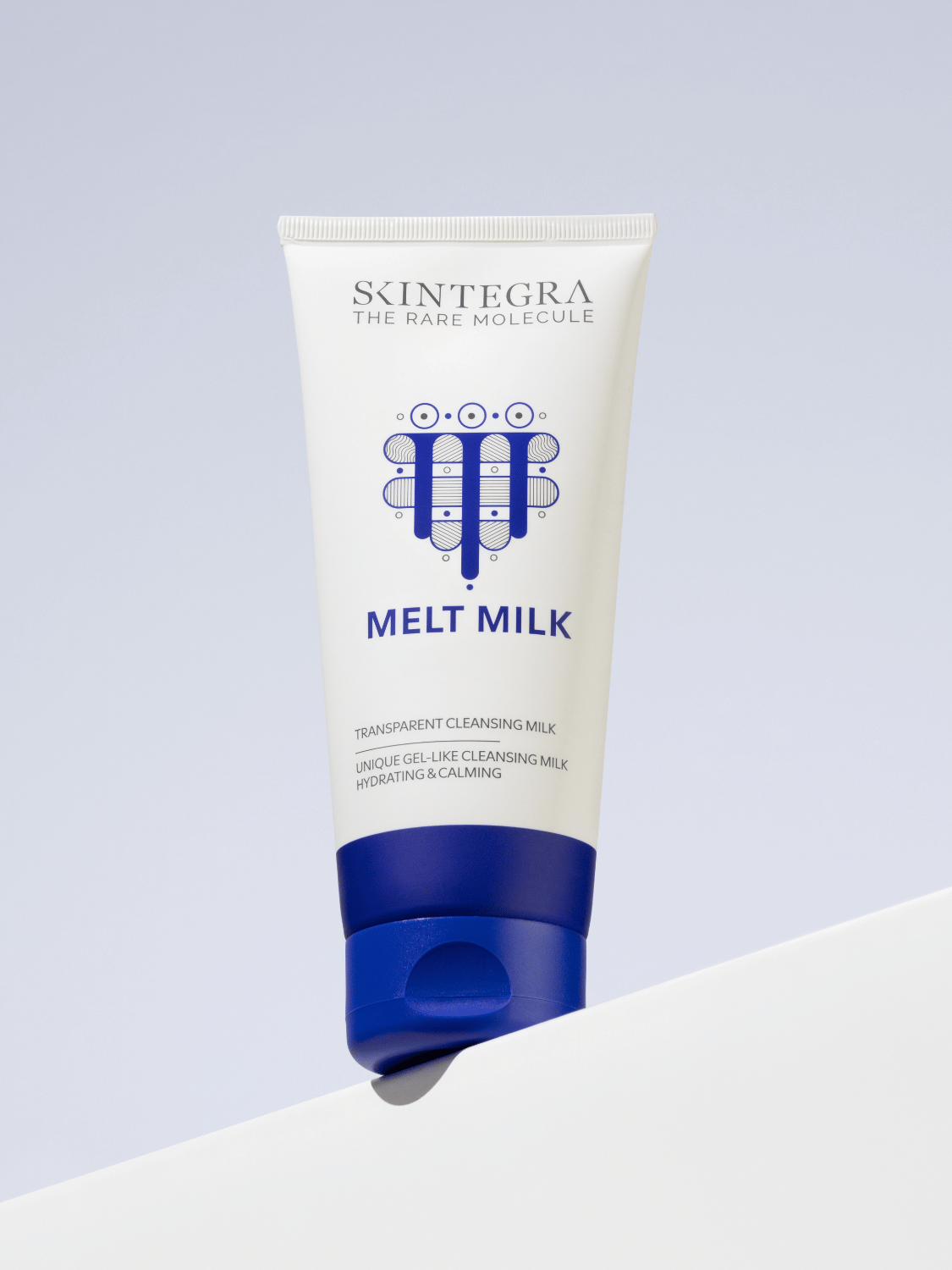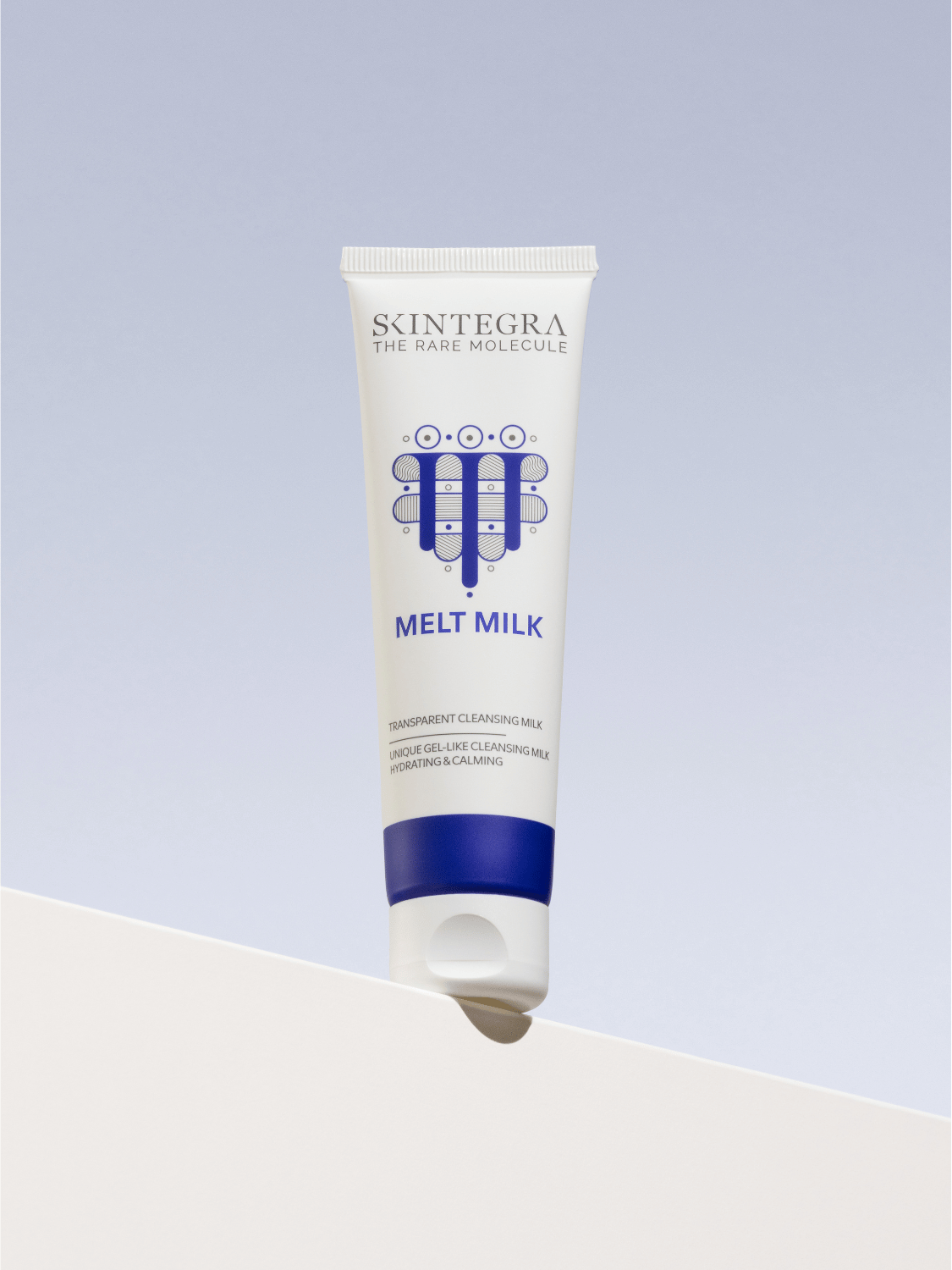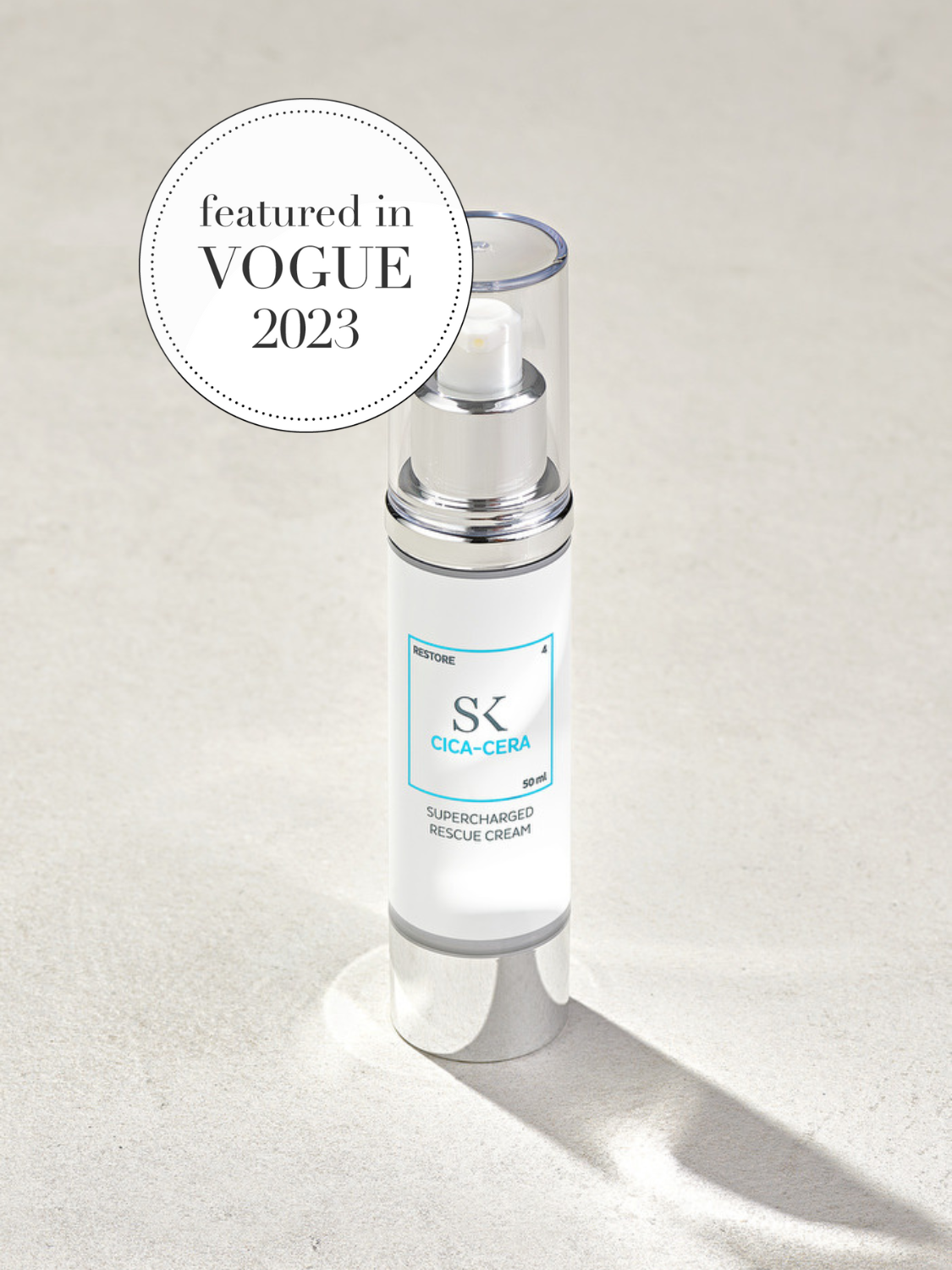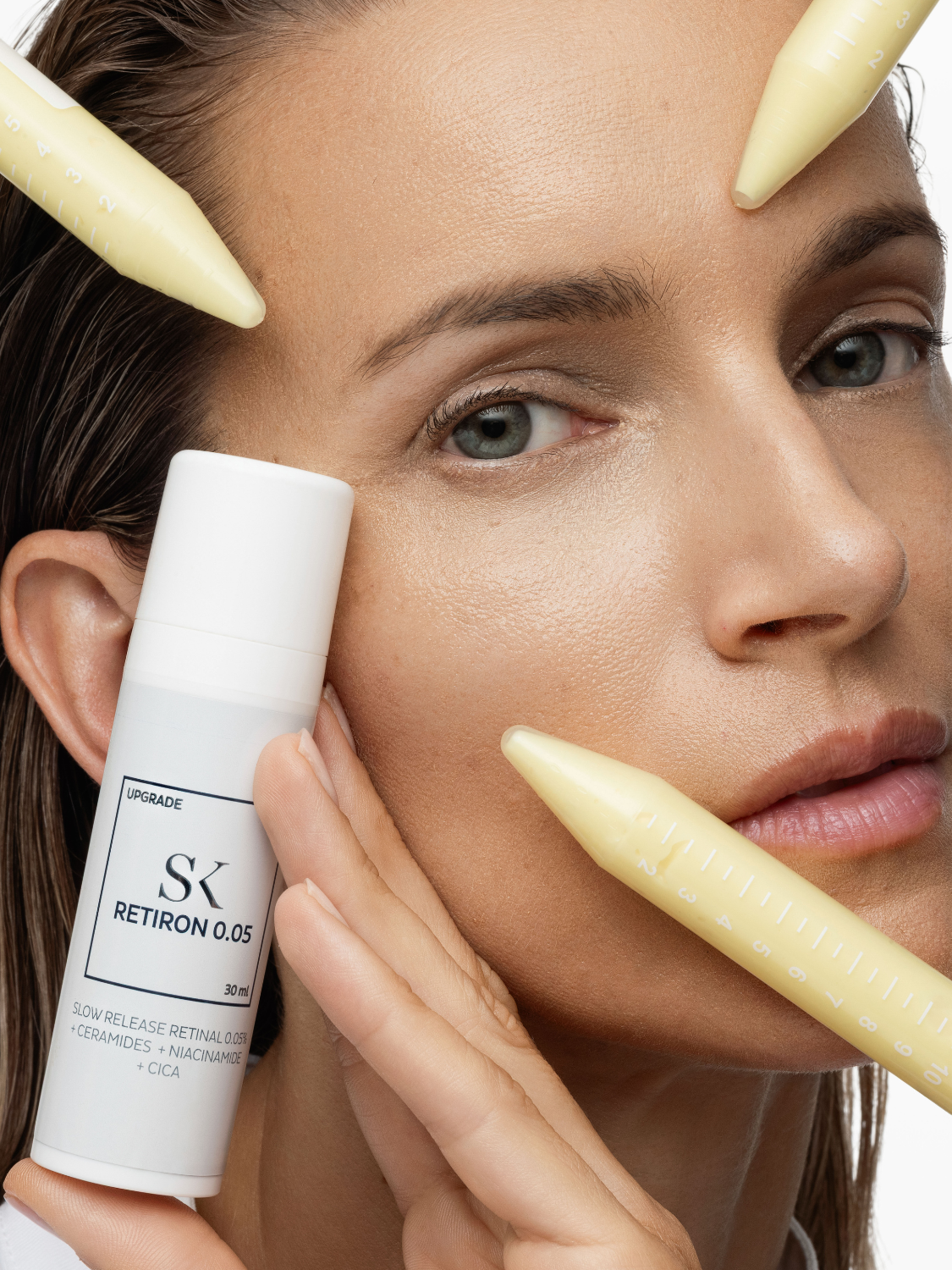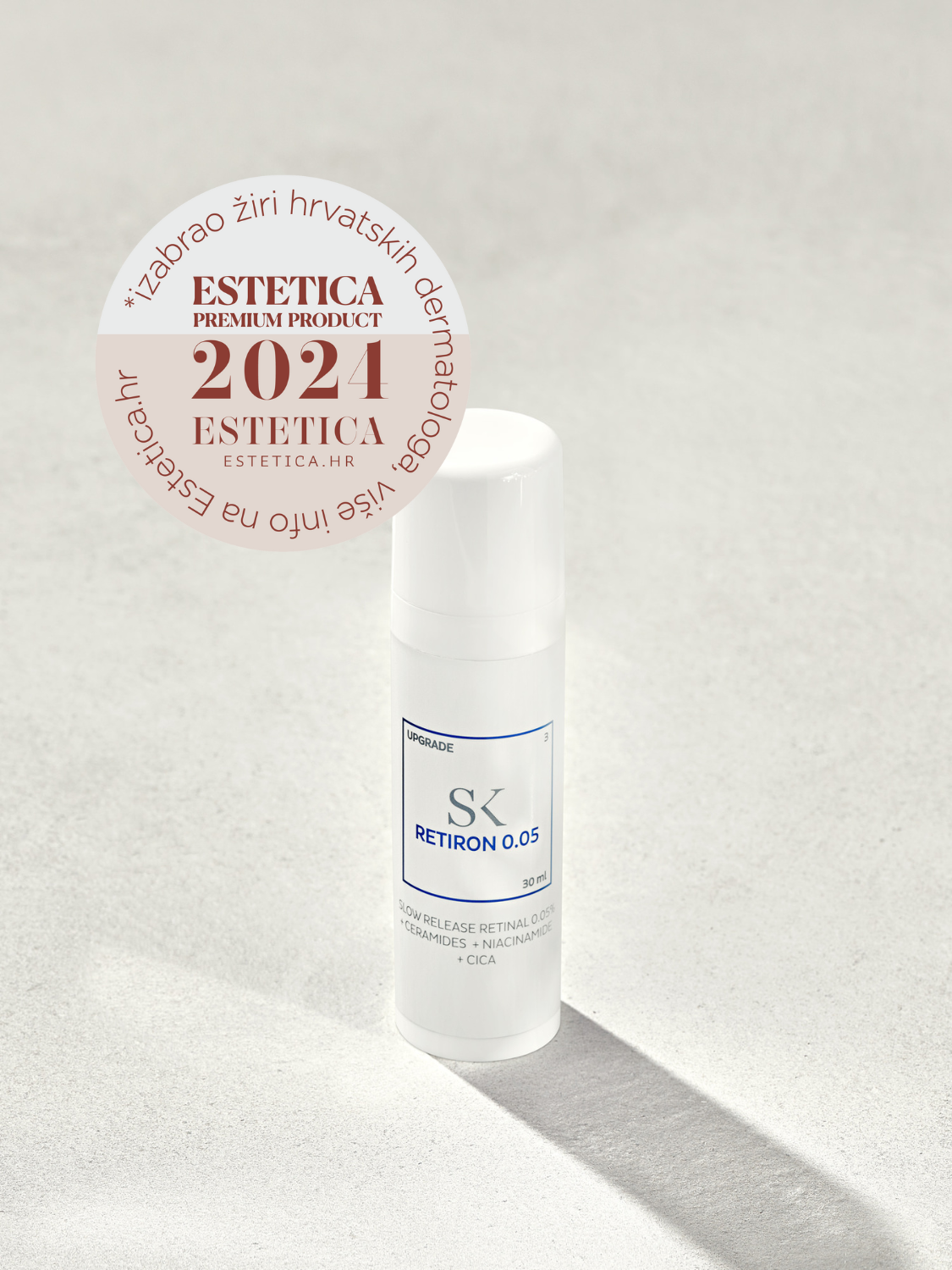The skin is our largest organ, it makes up 15% of the total weight and represents a protective barrier that works in two directions: on the one hand, it prevents the loss of water and electrolytes from the body, and on the other hand, it protects it from the entry of harmful substances. Additionally, the skin plays an important role as part of the general immune system.
Morphologically, the skin consists of 3 layers - epidermis, dermis and subcutis, and the role of epidermis and dermis is important for the formation of acne.
The epidermis is the surface layer composed of keratinocyte cells. Beneath the epidermis is the dermis, a thick layer of skin made up mainly of collagen connective tissue. Blood and lymphatic vessels, nerve endings, sebaceous and sweat glands and hair roots are also located in the dermis .
It is precisely in the follicle (hair canal) that desquamation, or the peeling off of dead skin cells, takes place constantly, and there is also a sebaceous gland that secretes sebum onto the surface of the skin. More precisely, sebum mixes with exfoliated cells in the hair canal and, in the ideal case, they are thrown out together with the sebum on the surface of the skin. When that duct is blocked, the perfect conditions for the development of acne are created. Increased secretion of sebum complicates this process, and it is usually excessively secreted under the action of androgenic hormones, which is especially pronounced in adolescence (in both sexes), or in the second (luteal) phase of the cycle in adult women, when the level of estrogen decreases.
HOW DOES ACNE OCCUR?
Androgen hormones play a multiple role in the development of acne. Acne does not occur in people with a genetic error in the function of the androgen receptor, that is, it occurs much more often and more intensely in people with increased levels of androgen hormones such as testosterone, dihydrotestosterone (DHT) and androstenedione, which are easily detected by blood tests. However, sometimes individuals even with normal serum levels of androgenic hormones have acne, and this is due to a high level of androgen receptor sensitivity in the skin that is genetically determined.
In the body, androgen hormones are produced in several places: in the adrenal glands, in the testicles and ovaries, and extraglandularly: in the liver, skin and fatty tissue. The development and operation of the sebaceous glands is directly controlled by the androgenic hormone that begins to be secreted at puberty, which is why children never suffer from acne (the exception is babies who develop child acne due to androgenic hormones from mother's milk).
Androgenic hormones are also stimulated by increased stress. In women, a smaller amount of androgens is secreted, so a sudden and sudden rise in androgen levels due to stressful life circumstances can significantly worsen acne. By examining a sample of 4,000 women with acne between the ages of 25 and 40, it was found that stress is the cause of acne in 50% of cases.
In addition to the increased amount of sebum, an altered composition of certain lipid components in sebum is also important for the development of acne. Sebum contains several components: polar lipids, neutral lipids, wax esters, squalene and triglycerides. Under the influence of bacteria, triglycerides break down into free fatty acids, which are highly irritating to the skin. Locally reduced production of essential fatty acids (such as linoleic acid) is also one of the key factors in the development of acne.
In addition to the influence of androgen hormones on the amount of sebum secreted, and the reduced quality of sebum, which in individuals affected by acne is more sticky and waxy due to the lack of linoleic acid, the disordered function of the previously mentioned hair canal also participates in the pathogenesis of acne. Hyperkeratosis of the hair canal occurs. Cells that are exfoliated and should be expelled from the hair canal together with sebum, remain there and form a comedone, a "plug" that prevents further discharge of sebum.
Ultimately, this created the conditions for the reproduction of Cutibacterium acnes (C.acnes), a bacteria that feeds on sebum in conditions of blocked follicles and a simultaneous lack of oxygen. It is precisely C.acnes that secretes enzymes that support the breakdown of triglycerides into free fatty acids that stimulate the inflammatory effect. Acne develops as an immune response to the proinflammatory action of C.acnes bacteria.
In short, acne is caused by the interaction of the following factors: the influence of androgenic enzyme pathways; keratinization disorder with linoleic acid deficit in sebum; due to the influence of inflammatory mediators released by C. acnes bacteria and due to genetic predisposition.
FROM COMEDON TO ACNE
Comedones are a non-inflammatory form of acne, and according to the type, we distinguish between black and white comedones. Black comedones or blackheads should be further distinguished from normal enlarged pores with an undisturbed sebum discharge function. Blackheads are most often located on the T-zone, and differ from normal enlarged pores in size, significantly darker color and localization. If it seems like every pore on your face is a blackhead, it's much more likely that it's just enlarged pores that need to be taken care of so they don't get clogged.
True blackheads are made of oxidized keratin and accumulated melanin pigment from discarded cells and rarely develop inflammatory changes. Closed comedones , on the other hand, are a ticking time bomb. A closed comedone is located deeper in the follicle, and appears as a skin-colored papule (0.1 to 3 mm). The leakage of sebum onto the surface of the skin is reduced to a minimum, which is one of the prerequisites for the proliferation of C.acnes bacteria, and thus the formation of acne. Depending on the depth of the follicular channel where the inflammation is located, milder or more severe forms of acne will develop.
With particularly deep acne, a scar will form , sometimes even regardless of whether you "intervened" yourself and tried to eliminate the contents of the acne. If only the epidermis and the superficial dermis are damaged, a pink spot will remain on the surface of the skin, which can last from several weeks to several years. That pink spot is called procedural erythema. While there is no cosmetic solution for the resulting scars in the form of indentations, except in the form of a very slight improvement of the skin texture, procedural erythema can be treated with appropriate cosmetics, taking into account the fact that it is an inflammatory site that is trying to heal, so the application of cosmetic irritants can this process only make it harder or longer.
HOW TO TREAT COMEDONES AND ACNE?
Severe forms of acne are not treated with cosmetic preparations but with drugs and systemic therapy. Mild to moderate, especially comedonal and mild papulopustular acne, are successfully treated with a thoughtful selection of cosmetic products.
There are three essential assumptions that the product must meet in order to be effective against acne.
First, the product must be non-occlusive, i.e. not contribute to pore clogging.
Second, the product must be non-irritating because irritation prolongs the inflammatory response of the skin, and this means that it must not contain common irritants.
Third, the product must have effective active ingredients in adequate concentrations.
Although the cosmetics market is saturated with numerous products that promise quick results in the treatment of pimples and comedones, the recommended dermatological acne therapy is reduced to only a few active components: niacinamide, which shows success in treating acne in concentrations higher than 4%; to keratolytics such as salicylic, glycolic, azelaic and lactic acids that prevent hyperkeratosis; to comedolytics from the retinoid group and to benzoyl peroxide, which releases oxygen and thus directly affects the reproduction of C.acnes bacteria.
Acne treatments often come with an increased risk of irritation, which is one of the factors that lead to repeated inflammation. In order to break this vicious circle, we believe in a moderate approach and continuous care. The skin that we treat against acne and comedones must never be painful, dry and scaly because a healthy hydrolipidic barrier is extremely important in the process of treating inflammation, so it is important to emphasize soothing hydration.
Problematic skin should also not be burdened with unnecessary ingredients that do not contribute to the actual treatment of acne. This means that you should avoid known comedogenic components, perfumes, high concentrations of denatured alcohol and ethanol, synthetic dyes, essential oils such as menthol and eucalyptus (with the exception of tea tree, which has a proven antibacterial effect), oils that easily burn (oxidize) because they irritate the skin, aggressive surfactants such as SLS and SLES, known allergens such as linalool, geraniol, eugenol, camphor) and phototoxic ingredients in daily care (citrus components).

SUGGESTED SKINTEGRA ROUTINE:
In the morning: Solar I
In the evening: Clarion + Spectra
Combination to oily skin prone to clogged pores and mild to moderate acne requires a gentle cleanser, products with light, moisturizing textures that help soothe the skin, and a chemical exfoliant that will target irregularities, i.e. that frees pores from impurities, calms inflammatory processes and regulates production sebum. Heavy textures and too many layers are not an ideal combination for this skin type and problem, and during the day it is advisable to protect the skin with a cream with a protective factor.
The combination of AHA + BHA in the product, like the one in Clarion, is ideal for treating acne and comedones (with dark spots), while Spectra deeply hydrates without feeling heavy and greasy, and at the same time has an anti-inflammatory effect and is excellently combined with potent products like Clarion. Find out how to introduce a chemical exfoliant into your facial care routine HERE .


